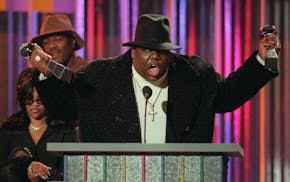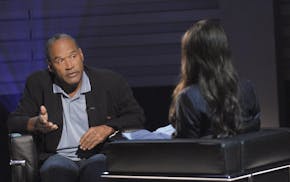Buses, bicycles and cars buzz by. Pedestrians scurry to and from the subway station. Street vendors hawk their wares.
Smack dab in the middle of all this Harvard Square activity, our tour guide asks us where we're from.
"Kentucky." "Vancouver." "Beijing."
"Minneapolis," I announce when my turn comes.
"Taiwan." "Dublin." "St. Paul."
St. Paul? I'm from St. Paul, too. But no St. Paulite ever says they're from St. Paul unless they're in Minnesota.
Elsewhere, who knew from St. Paul until the 2008 Republican National Convention was held there?
That's how people in Cambridge must feel, too. Who knew Cambridge until Harvard Prof. Henry Gates Jr. was arrested there by police for trying to break into his own house in 2010, or the Boston Marathon bombing suspects fled to Cambridge, killing an MIT police officer, last April?
Cambridge is to Boston what St. Paul is to Minneapolis — the smaller, less famous city across the river.
"Cambridge is well known, but credit goes to Boston," said Michelle DeKenis, a native Cantabrigian who graduated from Macalester College in St. Paul in 2012. "We're known for Harvard and MIT."
Which is why we're in Harvard Square — for the Hahvahd Tour, conducted by some enterprising Harvard students who sport T-shirts that reflect Bostonians' pronunciation.
The guide will walk you around the lush green Harvard Yard, pointing out such sights as the $57,000 guard house (the most expensive structure per square foot at Harvard), the dorm where future famous roommates Al Gore and Tommy Lee Jones once lived, and the oldest building on campus, dating to 1720.
The most important feature in the yard is the statue of John Harvard, third-most-photographed statue in the United States (behind the Statue of Liberty and Lincoln Memorial, both of which are much, much bigger), according to our tour guide. By the by, this statue was cast in 1884 by Daniel Chester French, who also did the Lincoln Memorial.
Not only do Harvard grads in their caps and gowns want their photos taken at the statue, but so does every tourist at one of the world's most famous institutions of higher learning. The tradition is that if you rub the statue's left foot, it's good luck.
"Some people think Harvard students touch the toe for good luck on their way to exams. That is not true," says Collin Jones, our tour guide (on his final tour, since he just graduated). "The only people who touch this toe are tourists. Students play pranks on the foot. It is not clean. If you rub the toe for good luck, please wash your hands afterward for even better luck."
Jones also tells us that it is known as "the statue of three lies" because there are three inaccuracies about the statue. First, John Harvard, a graduate of Cambridge University in England, wasn't the founder of the school bearing his name: He bequeathed his 400-book library and some money to the college. Second, 1638, the date on the statue of the school's founding, is wrong: It should have been 1636. Third, the statue is not modeled after Mr. Harvard.
"All portraits of John Harvard went with the great fire of 1764," Jones says, pointing out that no one knew what he looked like some 120 years later when the statue was cast. The model for the statue is believed to have been Harvard President Leonard Hoar or Hoar's grandson, a Harvard student at the time, Jones explains.
The Hahvahd Tour also shows you the dorm where Mark Zuckerberg lived when he created Facebook, and Widener Library, which has the nation's second-largest collection of books (after the Library of Congress) and a fascinating back story.
It was built in 1914 with a $2.5 million donation from Eleanor Elkins Widener as a memorial to her son, Harry, Class of 1907, a bibliophile who perished aboard the Titanic. She insisted on three stipulations: 1) No altering the face of the building (it has expanded to five stories underground, with more than 50 miles of shelves, holding more than 3 million books); 2) fresh flowers be placed daily in Harry's reading room (in which no one else may go except the flower deliverer) and 3) Harvard students must pass a 50-yard swim test to graduate because Mrs. Widener thought if Harry had known how to swim, he wouldn't have gone down with the Titantic. (The swimming requirement was eliminated in the 1970s, and some sources dispute that Mrs. Widener was responsible for implementation of the requirement.)
•••
After tales of pranks and lies, and hours in Harvard Square browsing the Harvard Book Store (family-owned since 1932) and the world's only Curious George Store, I needed a little respite. I found it a mere mile and a half from Harvard.
Serene, verdant and blissful only begin to describe Mount Auburn Cemetery, designed in 1831 as America's first garden cemetery. In this 175-acre arboretum, there are more than 9,400 trees (600 different types), more than 40,000 monuments (and more than 97,000 resting bodies) and Halcyon Lake (which lives up to its name).
You can do a walking tour or drive around. (There are 10 miles of roads and paths, and maps available.) Even though this is Cambridge, search for the graves of Boston's best and brightest, including activist nurse Dorothea Dix, Christian Science founder Mary Baker Eddy, futurist Buckminster Fuller, Supreme Court Justice Felix Frankfurter, sportscaster Curt Gowdy, artist Winslow Homer, politician Henry Cabot Lodge Jr., poet Henry Wadsworth Longfellow and psychologist B.F. Skinner.
The cemetery has all kinds of events, including concerts, wine tastings and bird-watching. And, of course, funerals and weddings (there are two chapels).
I climbed the Washington Tower, built in 1854, and got a stunning view of Boston across the Charles River, and, of course, Cambridge.
•••
Boston is hip, trendy and fast-paced. Cambridge is more diverse, alternative and neighborhood-oriented. The fifth-largest city in Massachusetts, it is sometimes called "the city of squares" because the commercial centers of its various neighborhoods are all squares — Harvard, Porter, Davis, Central, Kendall, Lechmere and Inman.
Near Kendall Square sits the Massachusetts Institute of Technology — two miles or two subway stops from Harvard.
While Harvard is rich with history and old buildings, MIT is distinguished by modern art and architecture. There are sculptures by Pablo Picasso, Alexander Calder, Louise Nevelson and Henry Moore, among others. Perhaps the most iconic or photographed is "The Alchemist," Jaume Plensa's modern bust of a man literally made out of various numbers.
The dense campus is dotted with striking buildings by such famous architects as Eero Saarinen (Kresge Auditorium) and I.M. Pei (the Green Building). But the pièce de résistance is the Stata Center by Frank Gehry, architect of the Weisman Museum at the University of Minnesota.
Yes, the Stata Center is eccentric, even weird. On the outside and the inside. The exterior looks like it was designed by a kid who got carried away adding towers to his Lego structure — except these towers are clad in brick and shiny metal and look like they are about to topple over.
Inside, the hallways, stairways and rooms seem jury-rigged by some diabolical architecture student trying to exact revenge against a school from which he flunked out (which isn't really the case here). You can't find your way without a map or a stop at the giant "?," which is an information booth.
Ishaan Chugh, a computer science major from New Delhi, said it took him a week to figure out how to navigate the Stata Center.
"It's supposed to be disorienting," he said. "That's Gehry."
MIT students are known for their sense of humor. Witness some of the pranks they've pulled, which are recognized with displays inside the Stata Center. In 1991 students turned a fire hydrant into a working drinking fountain. Then there was the realistic-looking replica of an MIT police car — whose number was "pi" — that students put high atop the great dome of Building 10 in 1994. The car now rests on a high ledge inside the Stata Center, covered in handmade flowers.
On a sunny June afternoon, I couldn't find one MIT cop patrolling campus. (There is an ad hoc memorial to Sean Collier, slain in his police car by the marathon bombers, outside the Stata Center.) However, over at Harvard, officer Steve O'Connor talked about the post-marathon bombing state of mind. He said for Harvard graduation in May, when Oprah Winfrey gave the commencement address, people were asked to not bring backpacks to the ceremony. Otherwise, he says, it's business as usual.
According to Cambridge resident DeKenis, "Everyday life is completely back to normal."
Twitter: @JonBream • 612-673-1719

ABBA, Blondie, and the Notorious B.I.G. enter the National Recording Registry
West Virginia transgender sports ban discriminates against teen athlete, appeals court says
Dr. Martens shares plunge to record low after weak US revenue outlook
Visa fees for international artists to tour in the US shot up 250% in April. It could be devastating

